The Council for Aid to Jews (codenamed “Żegota”) was an underground rescue organization of Poles and Jews. It operated in German-occupied Poland from December 4, 1942, to January 1945 and was supported by the Polish government-in-exile. Żegota’s main objective was to coordinate efforts to save Jews from Nazi persecution and murder. Its members worked clandestinely, often risking their own lives and the lives of their families and friends. Żegota supplied tens of thousands of Polish Jews with fake IDs. The network also identified hiding places and delivered money, medical assistance, and food to thousands of Jews in its care. Yad Vashem has honored the organization and individual Żegota members for their efforts.
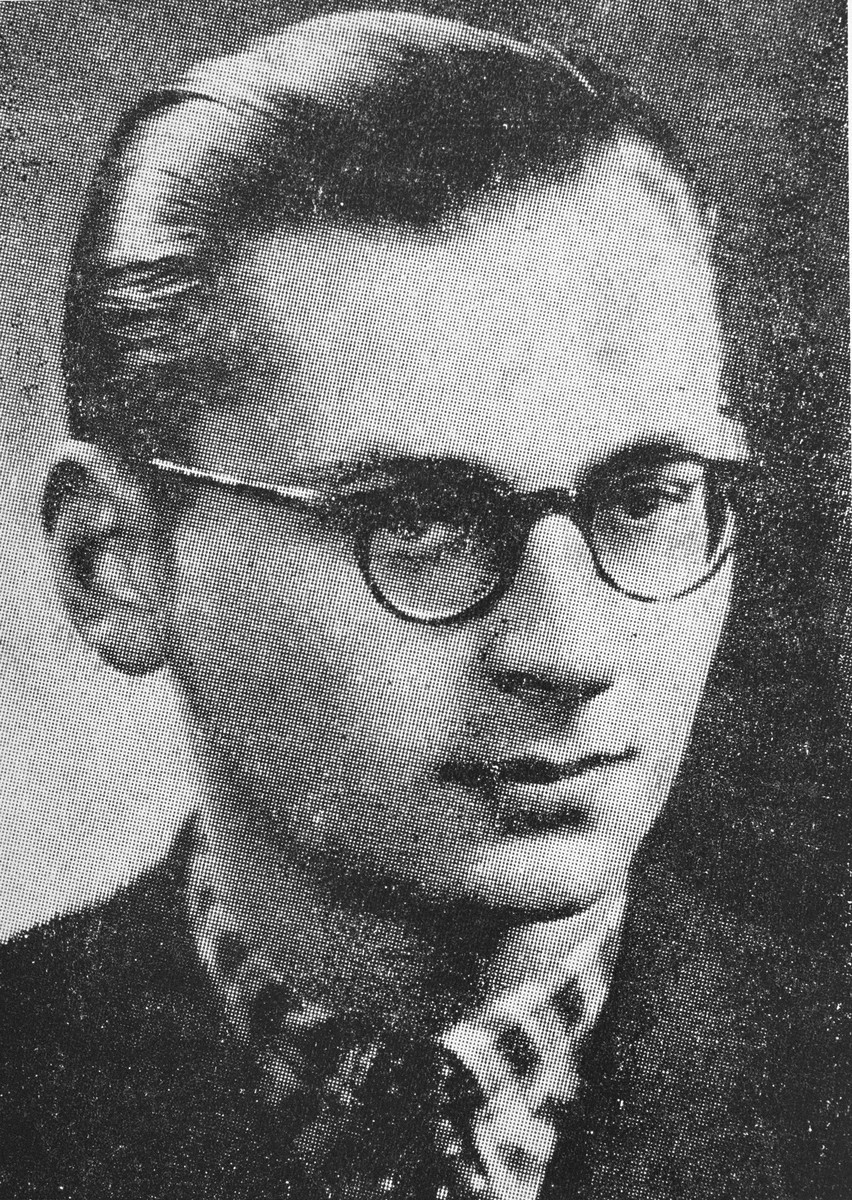
Portrait of Władysław Bartoszewski, Poland, unknown date.
Władysław Bartoszewski (1922–2015) was a co-founder and member of the Council for Aid to Jews, codenamed “Żegota.” Żegota was a clandestine rescue organization of Poles and Jews in German-occupied Poland. Supported by the Polish government-in-exile, Żegota coordinated efforts to save Jews from Nazi persecution and murder. It operated from 1942 to 1945.
After World War II broke out in September 1939, Władysław worked as a janitor at a Polish Red Cross clinic. In the fall of 1940, Władysław was caught in an arbitrary arrest wave in Warsaw. The Nazi German authorities then sent him to the Auschwitz concentration camp. Władysław was released in 1941 through the efforts of the Red Cross. For the rest of the war, he actively engaged in resistance efforts against the Nazis. He was a member of various underground organizations. Among these groups was the Provisional Committee for Aid to Jews, the precursor to Żegota.
Władysław co-founded Żegota in late 1942. As a member, he was responsible for activities such as providing forged documents or medical aid to Jews. Władysław also compiled reports on the plight of Jews in German-occupied Poland. In 1943, he began serving as deputy director of the Jewish Department of the Government Delegation for Poland (Delegatura). This was a liaison office between Żegota and the Polish government-in-exile.
Władysław survived the war. He went on to become a historian and politician. In 1963, he was invited to plant an olive tree in Yad Vashem in honor of Żegota. Two years later, Yad Vashem recognized Władysław as “Righteous Among the Nations.”
Item View![Irena Sendlerowa, a member of Zegota, an underground organization of Poles and Jews that coordinated efforts to save Jews in Nazi-occupied ... [LCID: 89130] Black and white portrait of an adult woman with dark wavy hair and light skin tone. She looks to the left of the camera with a big smile on her face. She is wearing lipstick and some light makeup.](https://encyclopedia.ushmm.org/images/large/6fa6d82a-d6c8-46e7-a980-cd73b24d9ba6.jpg)
Portrait of Irena Sendler in Warsaw, Poland, circa 1939.
Irena Sendler (1910–2008) was a member of the Council for Aid to Jews, codenamed “Żegota.” Żegota was a clandestine rescue organization of Poles and Jews in German-occupied Poland. Supported by the Polish government-in-exile, Żegota coordinated efforts to save Jews from Nazi persecution and murder. It operated from 1942 to 1945.
Irena Sendler (Sendlerowa) was working as a social worker in Warsaw when World War II broke out in 1939. After the Nazis forced Warsaw’s Jews to move into the ghetto in the fall of 1940, Irena used her position and prewar network to supply food and offer financial assistance to Jews. By early 1943, Irena had joined Żegota. Żegota members secured hiding places for Polish Jews. They also delivered money, food, false identity documents, and medical assistance to those in their care.
Under the alias “Jolanta,” Irena helped smuggle several hundred Jewish children out of the Warsaw ghetto. She found hiding places for them in orphanages, convents, schools, hospitals, and private homes. Irena provided each child with a new identity. She carefully recorded their original names and placements in code so that relatives could find them after the war. In the fall of 1943, Irena was appointed head of Żegota’s children's section. Only a few days later, she was arrested by the Gestapo (German secret state police). The Gestapo brutally beat and tortured her. Nonetheless, Irena never revealed the names of the children or her colleagues. She was later released from the Gestapo prison thanks to a bribe organized by her fellow rescuers. Despite the dangers, Irena continued working with Żegota under a new alias.
Irena Sendler survived the war. In 1965, Yad Vashem recognized her as “Righteous Among the Nations.”
Item View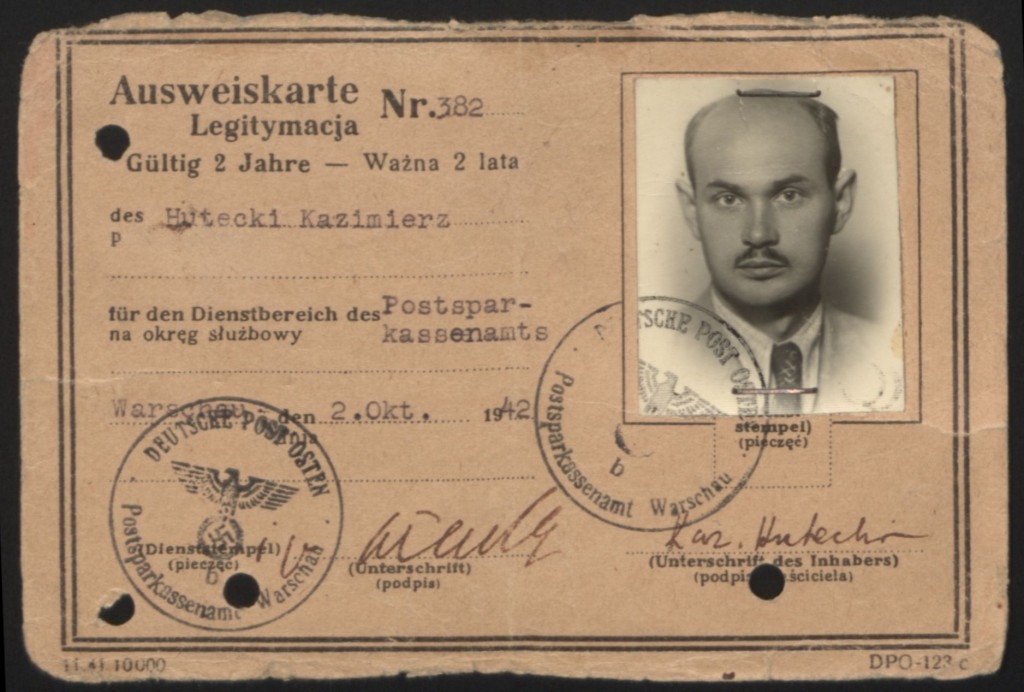
During World War II, people often used false identities and forged identity documents to evade Nazi authorities. False identities were essential for resistance fighters, aid workers, and Jews hoping to pass as non-Jews. Creating high-quality, convincing forgeries required dozens of people to work together clandestinely. It also required sophisticated photography and printing equipment. For Jews passing as non-Jews, acquiring forged documents could mean the difference between life and death.
This forged document was used by Tadeusz J. Sarnecki during World War II. Under the pseudonym “Kazimierz Hutecki,” Tadeusz worked with the Council for Aid to Jews (codenamed “Żegota”). Żegota was a clandestine rescue organization of Poles and Jews. Supported by the Polish government-in-exile, it coordinated efforts to save Jews in German-occupied Poland from Nazi persecution and murder. From 1942 to 1944, Tadeusz and his wife, Ewa, secretly worked as couriers for the Zamość and Lublin branches of Żegota. They traveled to forced labor camps in the region, including Piotrków Trybunalski, Radom, and Starachowice. The Sarneckis secretly delivered money, documents, food, medicine, and letters to some of the Jews imprisoned there. On several occasions, they helped individuals escape by smuggling them out of these camps. Both Tadeusz and Ewa survived the war.
Item View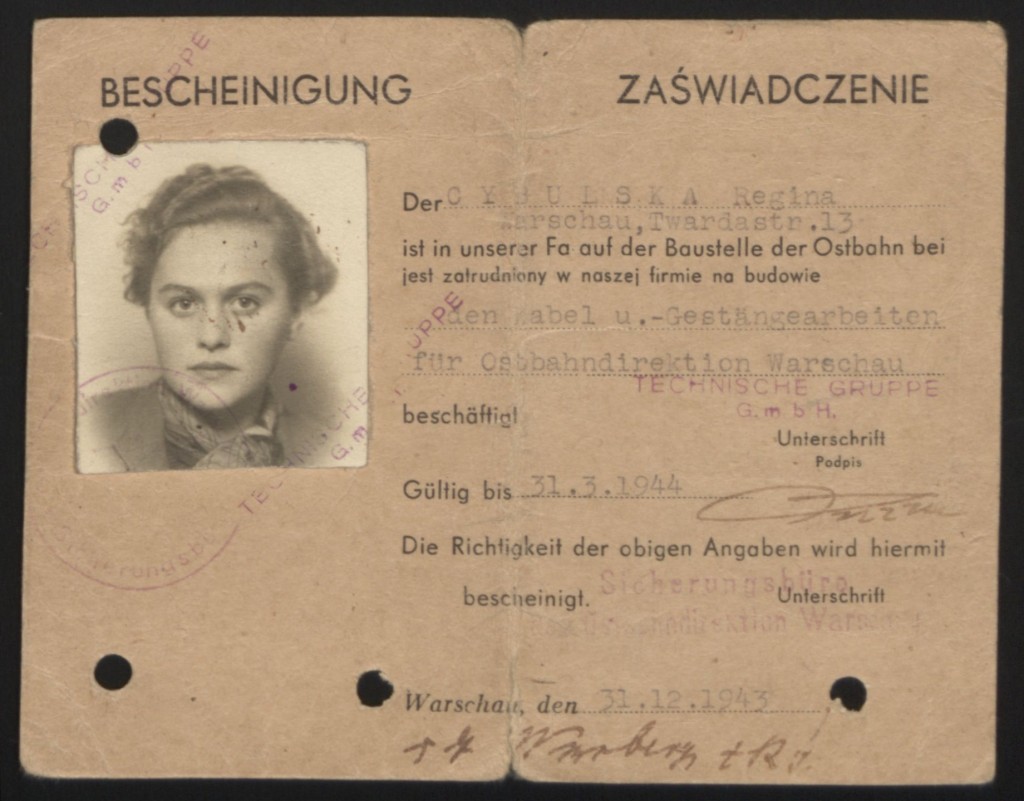
During World War II, people often used false identities and forged identity documents to evade Nazi authorities. False identities were essential for resistance fighters, aid workers, and Jews hoping to pass as non-Jews. Creating high-quality, convincing forgeries required dozens of people to work together clandestinely. It also required sophisticated photography and printing equipment. For Jews passing as non-Jews, acquiring forged documents could mean the difference between life and death.
During World War II, Ewa Sarnecka adopted the alias “Regina Cybulska” and used this false identity document to conduct clandestine activities. From 1942 to 1944, Ewa and her husband Tadeusz Sarnecki worked for the Council for Aid to Jews (codenamed “Żegota”). Żegota was a clandestine rescue organization of Poles and Jews that coordinated efforts to save Jews from Nazi persecution and murder. The Sarneckis served as couriers for the Zamość and Lublin branches of Żegota. They traveled to selected forced labor camps in the region, including Piotrków Trybunalski, Radom, and Starachowice. The Sarneckis secretly delivered money, documents, food, medicine, and letters to the Jews imprisoned there. On several occasions, they were even able to smuggle individuals out of the camps. Both Ewa and Tadeusz survived the war.
Item View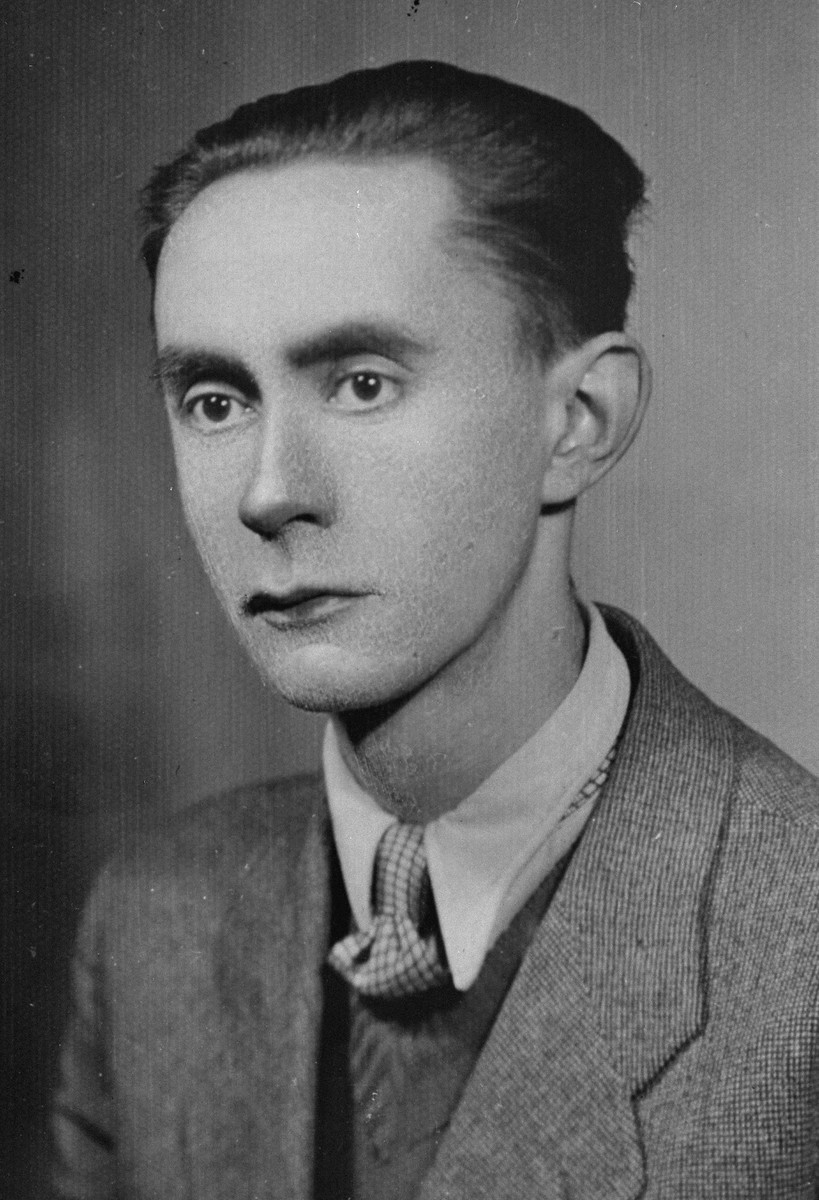
Wartime portrait of Andrzej Klimowicz, Poland.
Andrzej Klimowicz (1918–1996) aided and rescued Jews in Warsaw throughout the duration of the German occupation of Poland. He eventually became a member of the Council for Aid to Jews (codenamed “Żegota”), a clandestine organization that coordinated efforts to save Jews from Nazi persecution and murder. Under the auspices of Żegota, Andrzej played a role in providing Jews in Warsaw with forged identity papers and hiding places outside the walls of the Warsaw ghetto. Andrzej survived the war. In 1981, Yad Vashem recognized Andrzej as Righteous Among the Nations.
Item View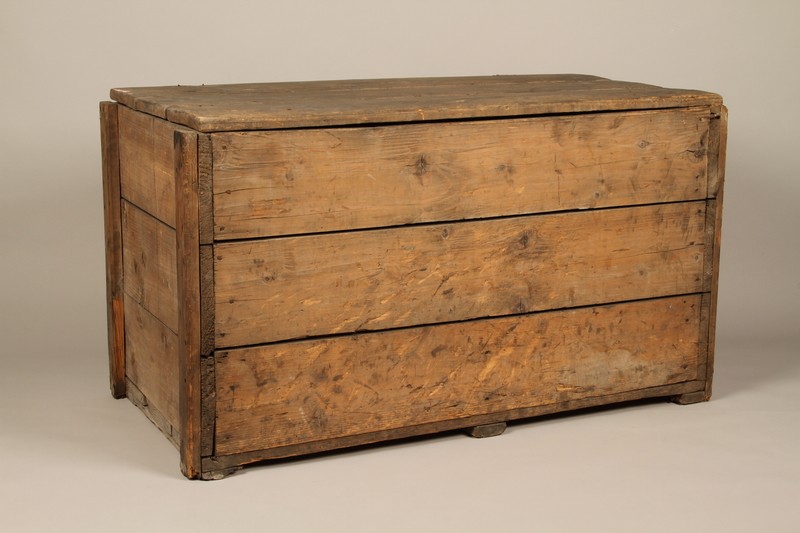
This large, lidded wooden chest was used by the Council for Aid to Jews (codenamed “Żegota”) to hide false identity documents from Nazi authorities.
Żegota was an underground rescue organization of Poles and Jews in German-occupied Poland and operated from December 1942 to January 1945. Supported by the Polish government-in-exile, it coordinated efforts to save Jews in German-occupied Poland from Nazi persecution and murder. One of Żegota’s most impactful clandestine activities was producing and providing Jews with fake identification documents to help them evade the German authorities. Creating high-quality, convincing forgeries required dozens of people to work together clandestinely at great risk to themselves and their families.
Item View
During World War II, people often used false identities and forged identity documents to evade Nazi authorities. False identities were essential for resistance fighters, aid workers, and Jews hoping to pass as non-Jews. Creating high-quality, convincing forgeries required dozens of people to work together clandestinely. It also required sophisticated photography and printing equipment. For Jews passing as non-Jews, acquiring forged documents could mean the difference between life and death.
This identification document was used by Izabela Bieżuńska to establish her alias as "Janina Truszczyńska.” Izabela was a member of the Council for Aid to Jews (codenamed “Żegota”), an underground rescue organization of Poles and Jews in German-occupied Poland. Supported by the Polish government-in-exile, Żegota operated from December 1942 to January 1945. The organization coordinated efforts to save Jews from Nazi persecution and murder.
Item View
We would like to thank Crown Family Philanthropies, Abe and Ida Cooper Foundation, the Claims Conference, EVZ, and BMF for supporting the ongoing work to create content and resources for the Holocaust Encyclopedia. View the list of donor acknowledgement.